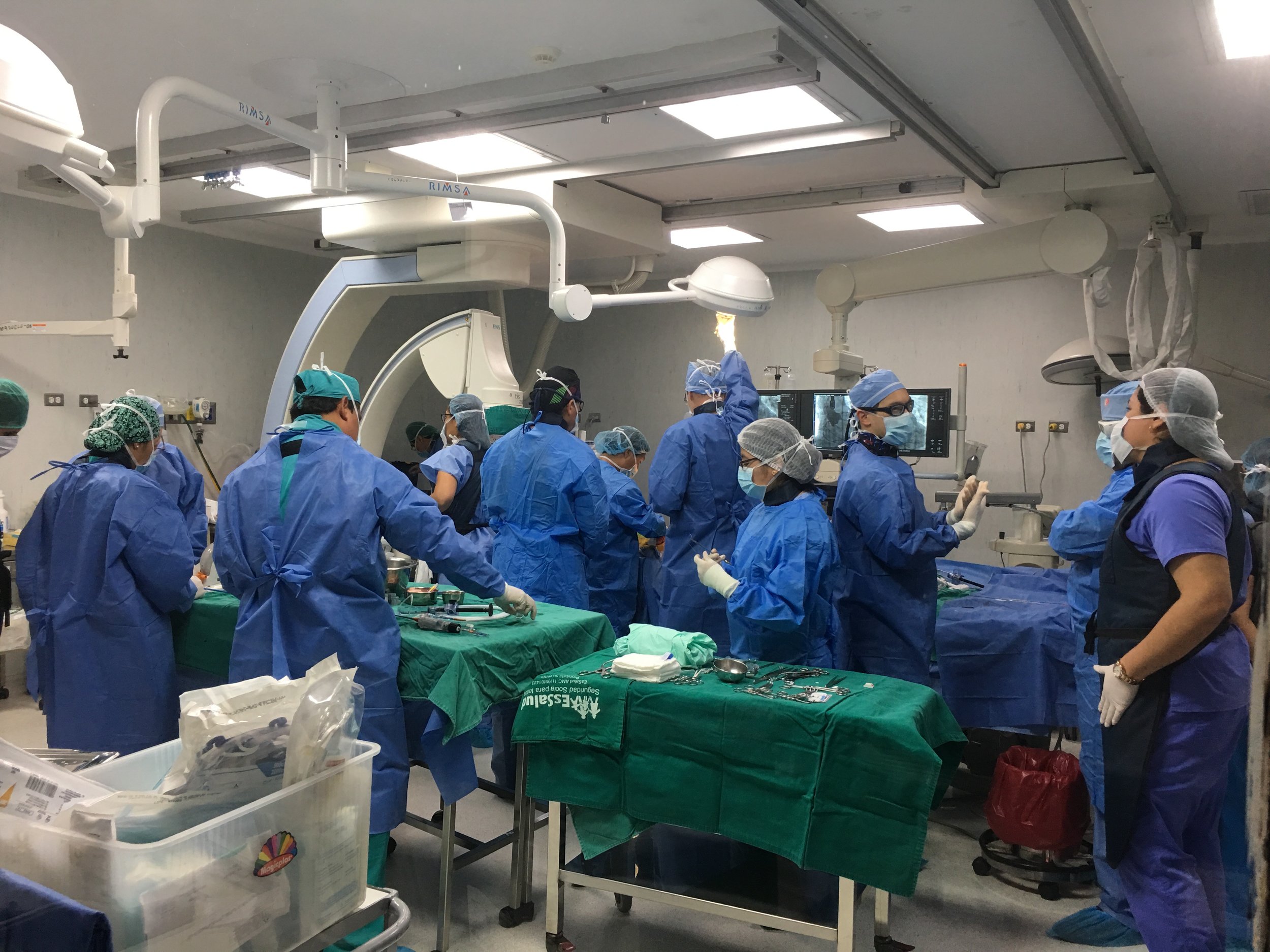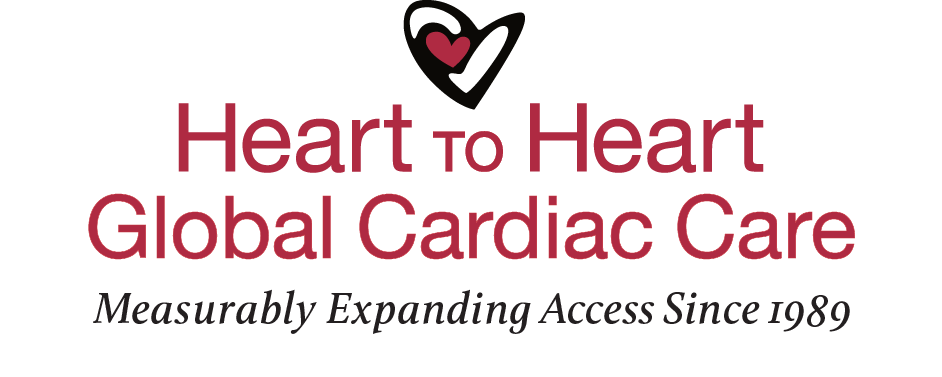
Transcatheter Aortic Valve Replacement - TAVR
INCOR and Heart to Heart specialists collaborate in the catheterization lab during one of the eight TAVR procedures performed jointly on this mission. TAVR technology enables a patient’s aortic valve to be replaced through the blood vessels - via a catheter threaded through the femoral up to the heart. This relatively new procedure replaces a heart valve without open heart surgery, which some patients are unable to safely withstand.

At the Instituto Nacional Cardiovascular (INCOR)
Pediatric cardiac intensive care nurse, Linda Steinhauer (center, in cap) observes INCOR staff’s “transport” - the transfer of a patient from the operating table to the pediatric cardiac intensive care unit (PCICU).

Clinical Training in the Intensive Care Unit
Nurse Steinhauer (far right), demonstrates bedside patient care at the INCOR pediatric cardiac intensive care unit, Peru’s largest and most advanced PCICU, which treats more than 500 children each year.

Important Role of Medical Interpreters
Pediatric cardiologist, Dr. David Teitel (far left), and his INCOR colleagues, Dr. Antonio Skrabonja and Dr. Gabriela Morales, discuss a range of topics with the help of interpreter Dr. Liliam Aquino (far right). Drs. Morales and Aquino attended the latest Mayo Clinic Echo Conference in November 2016 as part of Heart to Heart’s Scholar Exchange Program.

Meet Carlos: a grateful patient and his wife
TAVR patient Carlos, age 71, pictured here with his wife, is in good spirits and almost ready to leave the ICU - just three days post-surgery! Carlos says he has no words to fully express his gratitude to the donors of his new heart valve, the Edwards Lifesciences Foundation, or to the highly-trained medical team of people who worked together to implant it into his heart.

Preparing a child for open heart surgery
Specialists prepare a fourteen-year-old girl with hypertrophic cardiomyopathy - an abnormal thickening of the heart muscle - for open heart surgery. Hypertrophic cardiomyopathy is very common and can affect people of any age. It is a common cause of sudden cardiac arrest in young people, including young athletes.

Heart disease affects people of every age
Heart to Heart Founder and Medical Director Dr. Nilas Young performs open heart surgery on a teenage patient while Hernan Carcamo, MD provides interpreting. The patient did well through surgery and throughout her post-operative stay in the ICU, and has an excellent prognosis.

Juanita feels "like a queen"
Juanita (left), an 84-year-old TAVR patient, enjoys a visit from one of her sons two days post-surgery. Juanita had been experiencing trouble breathing and had heart palpitations before she sought care. When we had a chance to check on her post-operatively she thanked us and added, “I feel like a queen.”

Providing patient family education
Through the help of an interpreter, Heart to Heart nurse Linda Steinhauer (far left), INCOR head nurse Liliana Alvarado (in colorful cap), and the mother of an ICU patient instruct family members on proper handwashing technique before they visit their children in the intensive care unit.

Intraoperative transesophageal echocardiograms
Dr. David Teitel (far left) observes a Peruvian colleague perform a transesophageal echocardiogram (TEE) on a nine-year-old patient. TEEs allow doctors to view heart function intraoperatively; they are performed after completing a surgical procedure, but before releasing a patient to the ICU, to confirm the adequacy of the repair of the heart.

